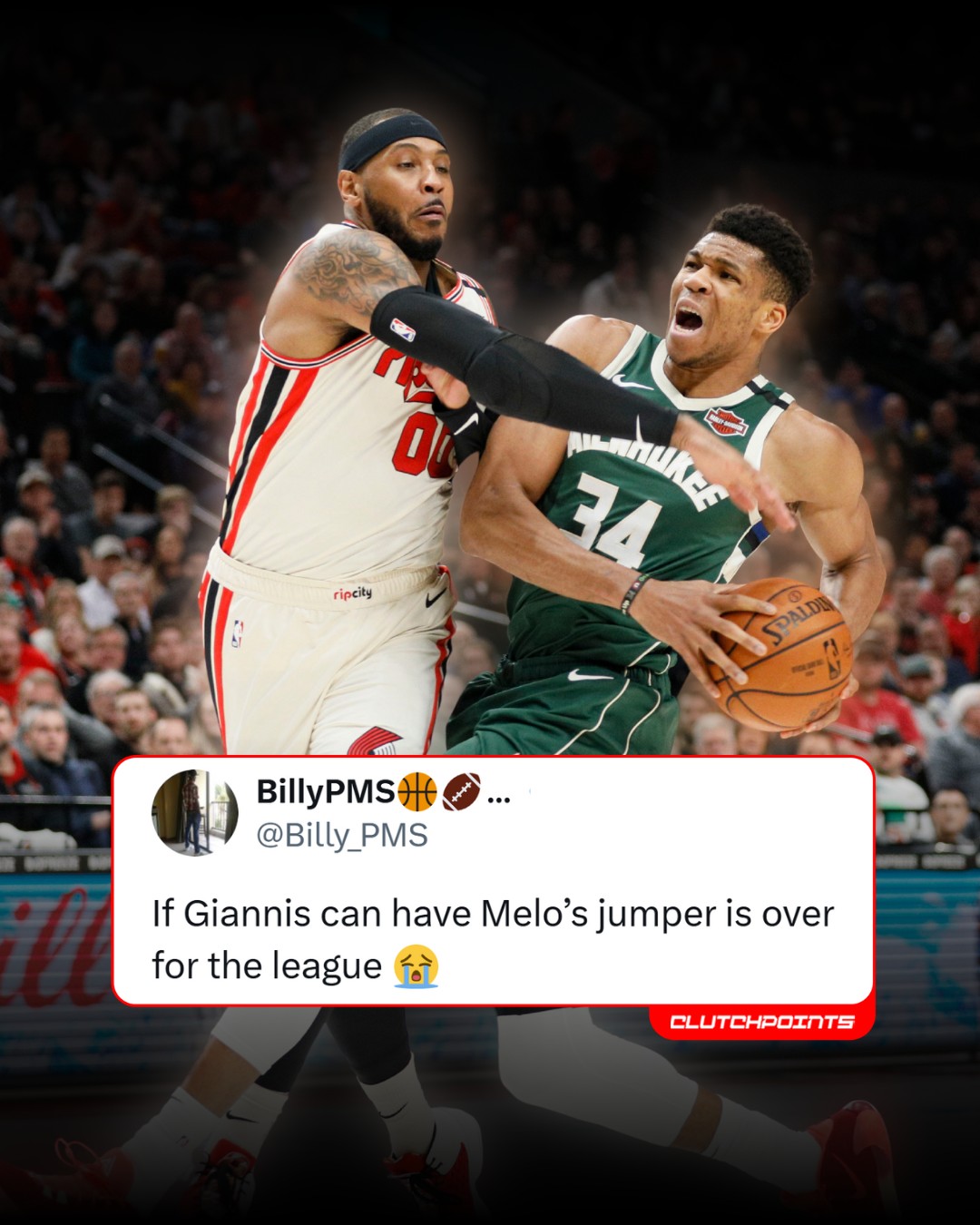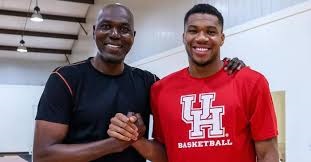In the pantheon of NBA greats, few players embody offensive versatility quite like Carmelo Anthony. Known for his silky mid-range game, deadly jab steps, and isolation scoring prowess, Melo was a nightmare matchup for defenders throughout his career. On the other hand, Giannis Antetokounmpo, the Greek Freak, has built his Hall-of-Fame trajectory on sheer athletic dominance—barreling to the rim with eurosteps, thunderous dunks, and relentless drives. While Giannis has expressed interest in training with retired legends like Melo to expand his arsenal, the reality is stark: he simply can’t replicate Anthony’s style. Over a decade in the league, Giannis has shown minimal evolution in key offensive skills, adding precious few tools while regressing in others.
The Fundamental Clash of Styles: Athleticism vs. Finesse
Carmelo Anthony’s game was a masterclass in offensive craftsmanship. He excelled in the mid-range, where he consistently shot around 35-36% from 10-16 feet in his prime years, using footwork, pump fakes, and pull-up jumpers to create space. His three-point shooting peaked at over 40% in seasons like 2013-14, and he maintained a free-throw percentage often above 80%, making him a reliable closer in crunch time. Melo’s assists hovered around 2-4 per game, but his value lay in self-creation—iso plays where he could dismantle defenses one-on-one without needing elite speed or vertical leap.
Contrast that with Giannis. From his rookie year in 2013-14, where he averaged just 6.8 points on 41.4% shooting, his game has always centered on physical gifts: length, speed, and power. He thrives at the rim, converting over 78% of attempts there in recent seasons, often via straight-line drives or transition buckets. But this reliance on athleticism limits him in half-court sets against packed defenses. Unlike Melo, Giannis lacks the refined footwork for jab-step pull-ups or the touch for consistent mid-range fadeaways. His career three-point percentage sits inconsistently low, and he rarely attempts the kind of contested jumpers that defined Anthony’s scoring. Even as Giannis has voiced admiration for Melo—recently stating he wants to train with him because “I don’t like working with players who are playing right now”—the body types and ingrained habits make emulation improbable. Giannis is a 7-foot freight train; Melo was a 6’8” surgeon with the ball.
Giannis’ Stunted Development: Incremental Gains, Minimal Additions
Giannis entered the NBA as a raw, skinny prospect from Greece, with scouts praising his potential but noting his lack of polish. Over 12 seasons, he’s transformed into a two-time MVP and champion, but a closer look at his stats reveals a player who has leaned heavily on his natural tools rather than building a diverse skill set.
- Scoring Efficiency at the Rim: This is where Giannis has shone, improving his field goal percentage from 41.4% as a rookie to a career-high 61.1% in 2023-24. His points per game ballooned to 30.4 in 2024-25, but this growth stems from higher usage (up to 35.2%) and better team spacing, not new moves. He’s still primarily a slasher, with over 70% of his shots coming within 10 feet of the basket in most seasons.
- Playmaking: He hasn’t developed the off-ball screening or spot-up shooting that could make him a true offensive hub like LeBron James.
- Limited Perimeter Expansion: Giannis has attempted more threes over time (up to 4-5 per game), but his accuracy hasn’t followed. After a decent 34.7% in his rookie year (on low volume), it’s plummeted to 22.2% in 2024-25. Mid-range shots? Virtually absent from his repertoire, unlike Melo’s bread-and-butter. Analyses of his progression highlight this stagnation: while he’s added muscle and confidence, core skills like ball-handling in tight spaces or off-dribble shooting remain underdeveloped.
Expert takes echo this. Discussions on his growth mindset praise his work ethic, but they often circle back to the same traits: obsession with the game and physical dominance, not technical refinement. One analysis notes he’s “not the most skilled,” relying on discipline over innate finesse. In essence, Giannis has polished his strengths but added few new weapons, making his game predictable in playoffs where athletic edges are neutralized.
Regressions That Highlight the Plateau
Worse still, Giannis has backslid in areas that could have diversified his attack, further distancing him from a Melo-like versatility.
- Free-Throw Shooting: A glaring weakness. Peaking at 77.0% in 2016-17, it regressed to a dismal 61.7% in 2024-25—worse than his rookie 68.3%. This not only hurts in close games but discourages aggressive drives, as hacks become a viable strategy. Melo, by comparison, rarely dipped below 75%, maintaining clutch reliability.
- Three-Point Regression: From sporadic highs around 30%, it’s tanked to sub-25% in recent seasons, reducing his spacing threat. Defenses sag off him, clogging the paint and limiting his drives—the very core of his game.
- Overall True Shooting: While it peaked at 64.9% in 2023-24, it dipped to 62.5% the next year amid these shooting woes. Rebounding has stayed elite (around 11-13 per game), but that’s another athletic staple, not a learned skill.
Social media and forums buzz with similar observations: while fans laud his passing as “underrated,” broader takes question if his development has plateaued, with one post calling him “one of the best development stories” but implicitly noting it’s more about physical maturation than skill acquisition.
Why Training with Melo Won’t Bridge the Gap
At 30 years old (turning 31 in December 2025) fundamental changes are tough. Melo himself responded enthusiastically to Giannis’ interest, praising his “student” mindset and offering to mentor. Yet, absorbing Melo’s jab-step mastery or mid-range touch requires years of repetition Giannis hasn’t invested. His body—built for explosion, not subtlety—doesn’t lend itself to Melo’s deliberate pacing. Plus, with regressions in shooting mechanics, adding finesse now feels like patching a sinking ship rather than rebuilding it.
Analyses suggest Giannis thrives by amplifying his gifts, not reinventing them. Attempting a Melo transformation could dilute what makes him special: that unstoppable force to the basket. As one veteran coach might say, “A—holes don’t get better”—implying ego can stall growth, but in Giannis’ case, it’s more about path dependency.
Giannis’ inability to play like Carmelo Anthony underscores a career of limited skill expansion. He has regressed in shooting reliability, leaving his game one-dimensional compared to Melo’s multifaceted scoring. As the NBA evolves toward spacing and versatility, Giannis’ stagnation could cap his legacy unless he defies the odds. For now, the Greek Freak remains a force of nature—not a craftsman like Melo. And his lack of development is showing in comparisons with younger more capable players that can do it all. Just because Giannis happened to see some old YouTube clips of Melo one night recently doesn’t mean he can emulate anything at all.

